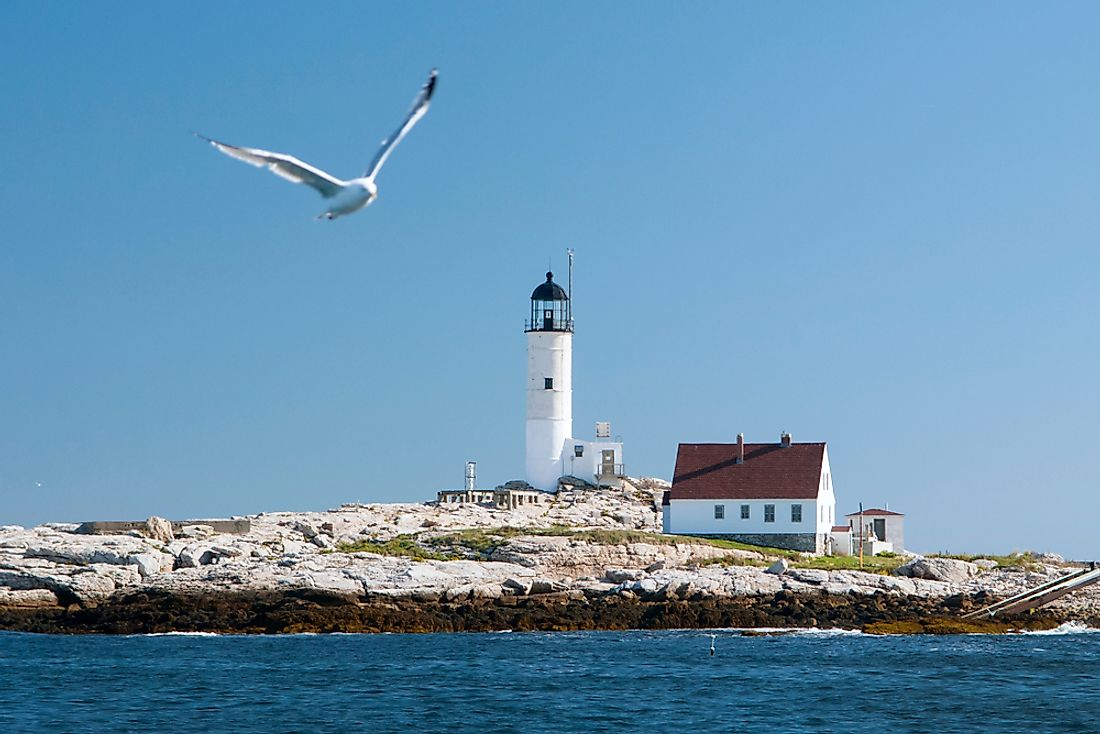Where Are The Isles of Shoals?

The Isles of Shoals are a group of small islands located roughly six miles off the coast of the US states Maine and New Hampshire, within the Gulf of Maine, which is a gulf of the Atlantic Ocean. Five of the nine islands are considered part of Maine, while the other four fall within New Hampshire's territory. Historically, local indigenous populations used the isles as fishing camps during summer and spring. The group of islands were named the Isles of Shoals by British Captain John Smith in 1614.
Islands Included in the Isles of Shoals
White and Seavey Islands
White Island and Seavey Island are located at the southern end of the Isles of Shoals, in New Hampshire. White Island is sometimes known as the Isles of Shoals Light because it is home to the White Island Lighthouse. Seavey Island is used by Cornell University to study and protect the tern (seabird) population during the summer. The two islands are connected by a land bridge during the low tide, but require a boat access during the high tide.
Appledore Island
Appledore Island is the largest of the nine islands in the Isles of Shoals. Also known as Hog Island, farmers inhabited the island in the mid-1600s, but most relocated to Star Island in the early 1700s to evade taxes. Today, the island is home to the Shoals Marine Laboratory, which is operated by the University of New Hampshire and Cornell University.
Star Island
Star Island is the second largest island in the Isles of Shoals. It is located near the town of Rye, New Hampshire, and is the only island that has commercial boat service from the mainland. Used as a temporary hub by fishermen in the early 1600s, Star Island received its first permanent resident in 1677, after Appledore Island began charging taxes. The island is currently owned by the United Church of Christ and the United Universalist Association.
Smuttynose and Malanga Island
Smuttynose Island covers approximately 10 hectares and is the third largest island of the Isles of Shoals. The island was reportedly named by a fisherman who discovered seaweed that resembled the nose of an aquatic animal. The island is known for the murders of two young Norwegian women in 1873. Two abandoned houses are located on the island, but it remains uninhabited. Malaga Island is located west of Smuttynose Island, and the two are connected by a breakwater built by Samuel Haley in the 1820s.
Cedar Island
Named after the cedar trees that grow on the island, Cedar Island was discovered by British explorer Captain John Smith in the early 1600s. It is a relatively small island and is occupied by lobster fishers and their families.
Lunging Island
Lunging Island was formerly known as Londoner’s Island because it was the original location of a London-based trading post. The island was initially owned by Oscar Laighton and continues to be privately owned. According to local legend, a shipwreck survivor buried treasure on the island, although there is no evidence to support the claim.
Duck Island
Named after the migrating birds that inhabit the island, Duck Island was used as a bombing range by the US Navy before it was sold to the Maine Coast Heritage Trust in 2002, and then later transferred to the US Fish and Wildlife Service, who transformed it into a wildlife sanctuary.











